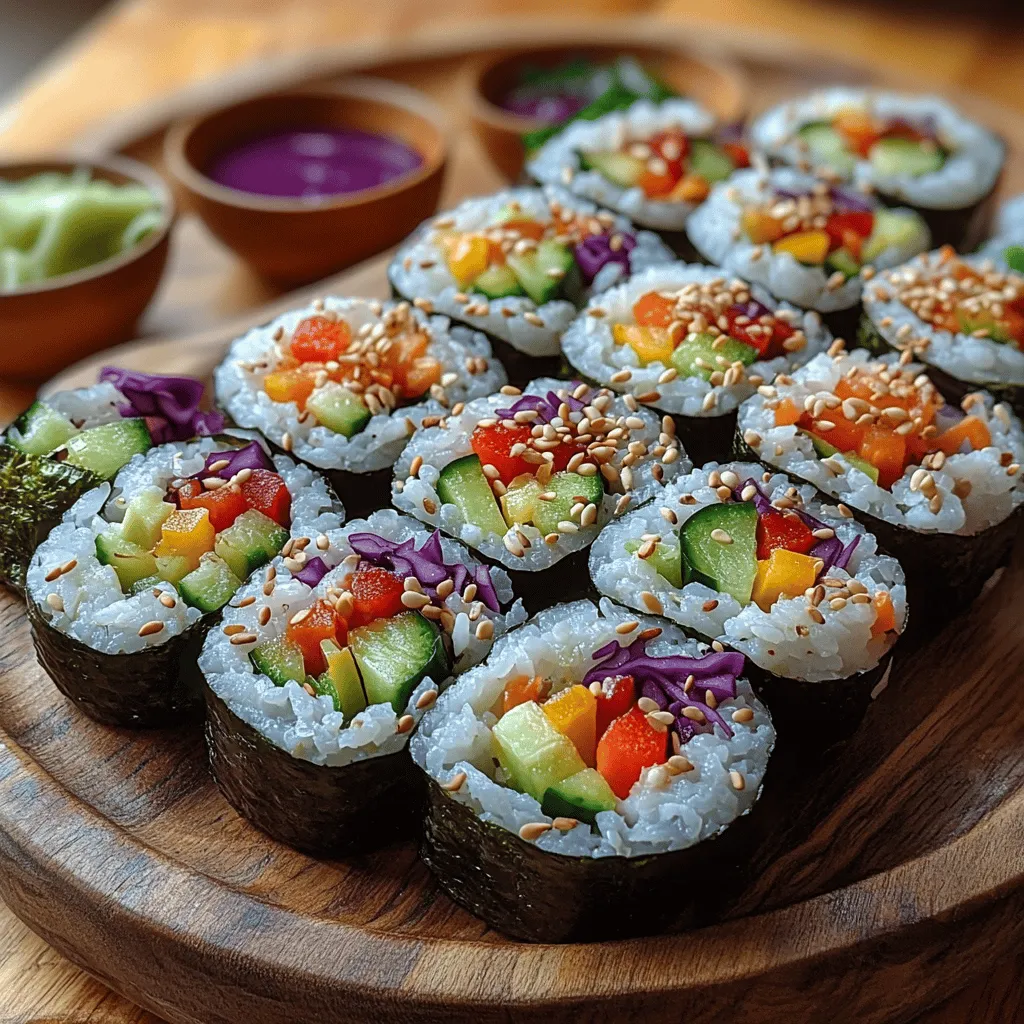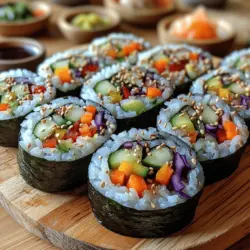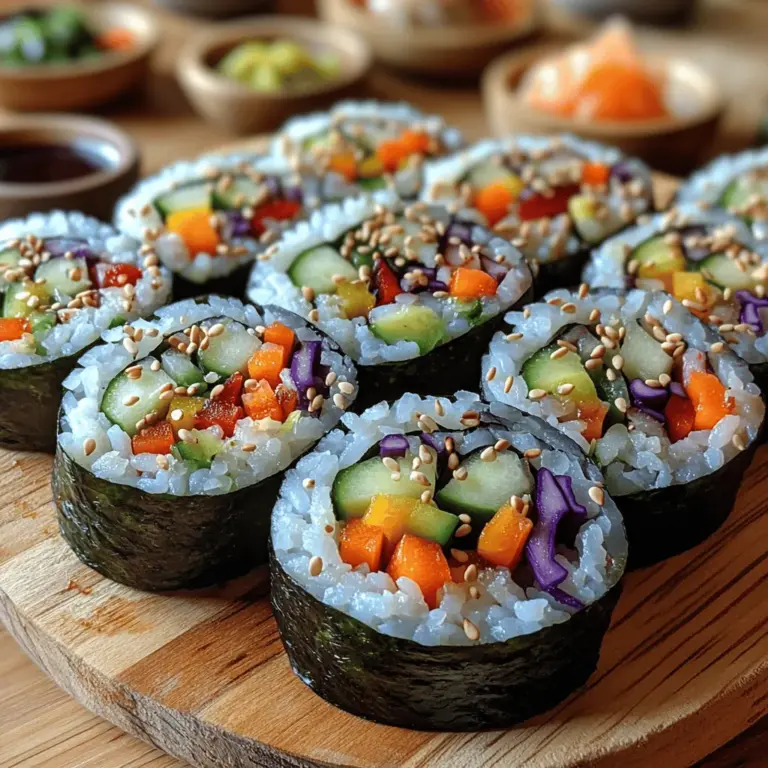Introduction
Lasagna stands as one of the most cherished dishes in Italian cuisine, known for its comforting layers of pasta, rich meat sauce, creamy cheese, and a hint of herbs. This dish has captured the hearts and palates of millions worldwide, transcending borders and cultures. Its origins can be traced back to ancient Greece, where a dish called Laganon, made of layers of pasta and sauce, was served. Over centuries, this culinary tradition evolved in Italy, particularly in the regions of Emilia-Romagna and Campania, where the modern version of lasagna began to take shape.
The classic Italian lasagna we know today has transformed from a simple dish to a symbol of hospitality and family gatherings. It is often prepared for special occasions and Sunday dinners, bringing friends and family together around the table. While many may opt for store-bought varieties due to convenience, homemade lasagna holds an unparalleled charm. The process of layering ingredients, the aroma that fills the kitchen as it bakes, and the satisfaction of serving a dish made from scratch are experiences that store-bought alternatives simply cannot replicate.
In this article, readers can expect a comprehensive guide to creating the perfect classic Italian lasagna. From understanding the essential ingredients to step-by-step instructions on preparation, this guide will equip you with the knowledge and skills needed to impress your family and friends with your culinary prowess. Get ready to roll up your sleeves and dive into the delightful world of homemade lasagna!
Understanding the Components of Lasagna
To create a truly authentic Italian lasagna, it’s essential to understand its fundamental components. Each ingredient plays a crucial role in the overall flavor and texture of the dish.
Essential Ingredients
The classic lasagna is composed of several key ingredients that work harmoniously together:
1. Pasta Sheets: Traditionally, lasagna is made with flat pasta sheets that can be either fresh or dried. Fresh pasta tends to yield a softer, more delicate texture, while dried pasta provides a sturdier structure. Both varieties can be used effectively, depending on your preference and availability.
2. Meat Sauce (Ragù): The heart of lasagna is its meat sauce, known as ragù in Italian cuisine. This sauce typically consists of ground meat, such as beef or pork, simmered with onions, garlic, carrots, and tomatoes. The slow cooking process allows the flavors to meld and develop depth, resulting in a rich and hearty sauce.
3. Béchamel Sauce or Ricotta Cheese Layer: A traditional lasagna often includes a béchamel sauce, a creamy white sauce made from butter, flour, and milk. Alternatively, some recipes may use a ricotta cheese layer, offering a different texture and flavor profile. Both options contribute creaminess and moisture to the dish.
4. Cheese: No lasagna is complete without cheese. The most common choices are mozzarella and Parmesan, which add flavor, richness, and a gooey texture when melted. High-quality cheeses can significantly elevate the dish, making it more indulgent and satisfying.
5. Herbs and Spices: Fresh herbs like basil and oregano are essential for imparting authentic Italian flavor to the dish. These ingredients not only enhance the taste but also add aromatic elements that make the lasagna even more enticing.
The Role of Pasta Sheets in Lasagna
The pasta sheets in lasagna serve as the structural foundation, holding the layers together while adding texture. When cooked, they should be tender yet firm enough to support the weight of the meat sauce and cheese. The choice between fresh and dried pasta can impact the cooking time and texture of the final dish, making it important to consider which option best suits your cooking style and preferences.
Overview of the Classic Meat Sauce (Ragù)
The classic ragù is a labor of love, requiring time and care to develop its rich flavor. It typically begins with sautéing onions, garlic, and other aromatic vegetables in olive oil until they soften and release their fragrance. Ground meat is then added, cooked until browned, and combined with crushed or diced tomatoes. Simmering the sauce allows the flavors to deepen, creating a savory base that complements the layers of pasta and cheese. Some recipes may even include a splash of red wine for added complexity.
Importance of Béchamel Sauce or Ricotta Cheese Layer
Béchamel sauce is a classic element in traditional lasagna, providing a creamy contrast to the meat sauce. This sauce is made by cooking equal parts butter and flour until golden, then gradually whisking in milk to create a smooth, velvety sauce. The béchamel not only adds richness but also helps bind the layers together.
Alternatively, a ricotta cheese layer can be used, often mixed with egg, herbs, and spices for added flavor. This option is popular for its ease of preparation and the unique texture it brings to the dish. Both choices are delicious, and the decision may come down to personal preference or dietary considerations.
The Significance of Cheese, Herbs, and Spices
Cheese, herbs, and spices are the finishing touches that elevate lasagna to a whole new level. Mozzarella adds a gooey, melty element, while Parmesan contributes a sharp, salty flavor that enhances the overall taste. Fresh basil and oregano provide an aromatic freshness that balances the richness of the meat sauce and cheese.
Choosing high-quality ingredients is paramount when creating lasagna. The flavors of the dish depend on the freshness and quality of the components used, making it worthwhile to invest in the best ingredients you can find.
Choosing the Right Ingredients for Classic Lasagna
Creating an outstanding lasagna begins with selecting the right ingredients. Here’s a closer look at what to consider:
Selection of Pasta: Fresh vs. Dried Lasagna Noodles
When it comes to pasta, you have the option of using fresh or dried lasagna noodles. Fresh pasta is typically made with eggs and flour, yielding a tender, delicate texture that cooks quickly. Dried pasta, on the other hand, is usually made with water and flour, offering a firmer bite and a longer cooking time. Both can produce delicious results, but fresh pasta may require less cooking time, while dried pasta must be boiled before layering.
Best Types of Meat for the Sauce: Ground Beef, Pork, or a Mix
For the meat sauce, choosing the right type of meat can greatly affect the flavor of your lasagna. Ground beef is a popular choice, providing a robust flavor and a satisfying texture. Ground pork can add sweetness and fat, contributing to a richer sauce. Many traditional recipes call for a combination of both meats to achieve a well-balanced flavor profile. When selecting meat, look for quality cuts with a good fat content for the best taste.
Fresh vs. Canned Tomatoes: Choosing the Best Option for Sauce
Tomatoes are the backbone of the ragù, and the choice between fresh and canned tomatoes can impact the sauce’s taste. Fresh tomatoes are excellent during their peak season, offering bright, vibrant flavors. However, high-quality canned tomatoes, such as San Marzano varieties, are often picked and canned at their peak ripeness, resulting in a rich, flavorful sauce year-round. For convenience and consistency, many home cooks opt for canned tomatoes, which are also less labor-intensive.
The Impact of High-Quality Cheeses: Mozzarella, Parmesan, and Ricotta
The cheeses used in lasagna play a critical role in its flavor and texture. Fresh mozzarella, while creamy and melty, is often preferred for its mild flavor and excellent melting qualities. Parmesan cheese adds a sharp, nutty flavor that enhances the overall dish. Ricotta cheese, whether included in a layer or a béchamel, provides creaminess and richness. Investing in high-quality cheeses will result in a more flavorful and satisfying lasagna.
Herbs and Spices: Basil, Oregano, and Their Contributions to Flavor
Herbs and spices are essential for seasoning the ragù and enhancing the overall flavor of lasagna. Fresh basil adds a bright, aromatic quality, while oregano provides earthiness and depth. Using fresh herbs whenever possible can elevate the dish, but dried herbs can also be effective if that’s what you have on hand. Experimenting with the quantities can help you customize the flavor to your liking.
Step-by-Step Guide to Making Classic Italian Lasagna
Now that you understand the key components and how to choose the right ingredients, it’s time to dive into the step-by-step process of making classic Italian lasagna. In this section, we will cover everything from preparing the meat sauce to making the béchamel sauce.
Preparing the Meat Sauce
Ingredients Needed for the Meat Sauce:
– 1 pound ground beef (or a mix of beef and pork)
– 1 onion, finely chopped
– 2 cloves garlic, minced
– 1 carrot, finely diced
– 1 can (28 ounces) crushed tomatoes (or 2–3 cups fresh tomatoes, chopped)
– 1 cup red wine (optional)
– 1 tablespoon olive oil
– Salt and pepper to taste
– Fresh basil and oregano (to taste)
Cooking the Meat and Incorporating Vegetables:
1. In a large skillet or saucepan, heat the olive oil over medium heat. Add the chopped onion and sauté until translucent, about 5 minutes.
2. Stir in the minced garlic and diced carrot, cooking for an additional 2–3 minutes until fragrant.
3. Add the ground meat to the pan, breaking it apart with a wooden spoon. Cook until browned, about 8–10 minutes, ensuring it’s well-cooked and no longer pink.
4. Season the meat mixture with salt and pepper to taste.
Simmering the Sauce for Depth of Flavor:
5. Pour in the red wine (if using) and let it simmer for a few minutes until the alcohol evaporates.
6. Add the crushed or chopped tomatoes and bring the mixture to a simmer. Reduce the heat to low and let it cook for at least 30 minutes, stirring occasionally. The longer it simmers, the more flavorful it will become.
7. In the final minutes of cooking, stir in the fresh basil and oregano, adjusting the seasoning as needed.
Making the Béchamel Sauce
Ingredients and Tools Needed for Béchamel:
– 4 tablespoons butter
– 1/4 cup all-purpose flour
– 2 cups whole milk
– Salt and nutmeg (to taste)
– Saucepan and whisk
Step-by-Step Instructions for Creating a Smooth Sauce:
1. In a medium saucepan, melt the butter over medium heat. Once melted, add the flour, whisking constantly for about 2–3 minutes until the mixture turns pale and bubbly (this is called a roux).
2. Gradually whisk in the milk, continuing to stir to prevent lumps. Keep whisking until the mixture thickens, about 5–7 minutes. It should coat the back of a spoon.
3. Season the béchamel with salt and a pinch of nutmeg, adjusting to taste. Remove from heat and set aside.
Alternative Options for a Ricotta-Based Layer
If you prefer to use a ricotta-based layer instead of béchamel, combine 15 ounces of ricotta cheese with 1 egg, a handful of chopped parsley, and a pinch of salt and pepper. This mixture can be layered between the pasta sheets for added creaminess and flavor.
With the meat sauce and béchamel prepared, you are now ready to assemble your classic Italian lasagna. The next steps will guide you through the layering process to create a beautifully baked dish that is sure to impress. Stay tuned for further instructions on assembling and baking your lasagna to perfection!

Assembling the Rainbow Veggie Sushi Rolls
When it comes to assembling your Rainbow Veggie Sushi Rolls, the process is both a creative and fun experience. Begin by gathering all your ingredients and tools: sushi mat, sharp knife, and a clean cutting board. Prepare your workspace to ensure you have everything within reach.
Layering Techniques: Starting with Rice and Vegetables
1. Prepare the Sushi Rice: Once your sushi rice is cooked and seasoned, let it cool slightly. The rice should be sticky enough to hold the rolls together but not too hot to handle.
2. Lay Out the Nori: Place a sheet of nori (seaweed) shiny side down on your bamboo sushi mat. This will be the base of your sushi roll.
3. Spread the Rice: With wet fingers (to prevent sticking), take a handful of sushi rice and evenly spread it over the nori, leaving about an inch at the top edge for sealing later. Aim for a thin, even layer, ensuring that the rice covers the entire surface.
4. Add the Vegetables: Next, arrange your colorful assortment of vegetables in a horizontal line across the center of the rice. Use a variety of textures and colors—carrots, bell peppers, cucumber, avocado, and any other vegetables you prefer. The goal is to create a vibrant and appealing visual that shines through when the sushi is sliced.
Tips for Even Distribution of Ingredients
– Balance the Ingredients: Avoid overloading your sushi with too many fillings. Stick to a balance where each bite has a mix of flavors and textures. A good rule of thumb is to use no more than 1 to 1.5 cups of fillings per roll.
– Layer Strategically: Start with firmer vegetables like carrots and cucumbers at the bottom, followed by softer ingredients like avocado. This layering helps maintain the structure of the roll.
How to Avoid a Soggy Bottom Layer
To prevent a soggy bottom layer of your sushi roll:
– Use Less Water for Rice: Ensure you don’t over-water your sushi rice as it cooks. Follow the recommended ratio of rice to water to achieve the right texture.
– Dry Ingredients: Make sure your vegetables are dry before placing them on the rice. Excess moisture can lead to sogginess.
– Seal Properly: When rolling, use the edge of the mat to help tuck the ingredients in tightly. This prevents gaps where moisture can accumulate.
Baking the Rainbow Veggie Sushi Rolls to Perfection
While sushi is typically not baked, ensuring your rolls hold together and maintain their freshness is essential. However, if you’re considering a crispy sushi variant, here’s how to achieve that perfect texture.
Recommended Baking Temperature and Time
If you’re opting to bake a variation of your sushi, preheat your oven to 350°F (175°C). Once assembled, place the rolls on a baking tray lined with parchment paper and bake for about 10-15 minutes. This will give the rolls a slight crispiness without drying them out.
Importance of Covering and Uncovering During Baking
When baking sushi rolls, it’s advisable to cover them with aluminum foil for the first half of the baking time. This prevents the rolls from drying out. In the last few minutes, uncover the rolls to allow the tops to crisp up slightly.
Techniques for Achieving a Golden Top Layer
For a delightful finish, consider brushing the tops of your sushi rolls with a light coating of sesame oil before baking. This will not only enhance flavor but also create a beautiful golden finish. You can also sprinkle sesame seeds over the top before baking for added texture.
Letting the Rainbow Veggie Sushi Rolls Rest
Although sushi is typically served immediately, allowing the rolls to rest for a few minutes can enhance the flavors and improve the overall texture.
Why Resting is Crucial for Sushi
Resting allows the rice to firm up slightly, making it easier to slice without falling apart. This is especially important if you have used a lot of fillings.
How Resting Affects Texture and Flavor
The resting period helps the flavors of the ingredients meld together. It also gives the rice time to settle, which can improve the overall mouthfeel of each bite.
Tips on How to Store Leftovers
If you happen to have leftovers, store them in an airtight container in the refrigerator. It’s best to consume them within 24 hours for the freshest taste. When ready to eat, enjoy them cold or let them sit at room temperature for a few minutes before serving.
Serving Suggestions for Rainbow Veggie Sushi Rolls
When it comes to serving your Rainbow Veggie Sushi Rolls, presentation and accompaniments play a significant role in enhancing the dining experience.
Ideal Side Dishes to Complement Sushi
Consider pairing your sushi rolls with:
– Miso Soup: A warm bowl of miso soup can be a comforting addition to your meal.
– Edamame: Lightly salted edamame offers a healthy and crunchy contrast.
– Pickled Ginger: A small serving of pickled ginger can cleanse the palate between bites.
Wine Pairing Recommendations
While sushi is often enjoyed with sake, a light, crisp white wine such as Sauvignon Blanc or a sparkling wine like Prosecco can be excellent choices, complementing the fresh flavors of the vegetables.
Presentation Tips for Serving Sushi at Gatherings
For an attractive presentation:
– Use a Sushi Platter: A wooden or bamboo sushi platter can create an authentic feel.
– Garnish Thoughtfully: Consider garnishing with thinly sliced green onions, sesame seeds, or wasabi for a pop of color and flavor.
– Slice Neatly: Use a sharp knife to slice your rolls into even pieces, enhancing their visual appeal.
Exploring Variations of Rainbow Veggie Sushi Rolls
Sushi is incredibly versatile, and there are numerous ways to switch up the ingredients and techniques to suit your preferences.
Vegetarian Sushi Alternatives
For those who want to enhance their veggie sushi:
– Grilled Vegetables: Incorporate grilled zucchini, bell peppers, or eggplant for a smoky flavor.
– Spinach: Fresh spinach can add a nutritional boost and a delightful color contrast.
Gluten-Free Options
If you’re looking for gluten-free alternatives:
– Zucchini Noodles: Instead of traditional sushi rice, you can use spiralized zucchini for a refreshing twist.
– Gluten-Free Rice: Ensure that the nori and any sauces used are certified gluten-free.
Regional Variations in Sushi
Exploring sushi from different regions can offer exciting new flavors:
– California Rolls: A popular American version that includes imitation crab and avocado.
– Temaki: Hand rolls that allow for creative fillings and are perfect for a casual dining experience.
Common Mistakes to Avoid When Making Rainbow Veggie Sushi Rolls
Even seasoned cooks can make mistakes when assembling sushi. Here are some common pitfalls to avoid:
Overcrowding Layers and Its Impact on Cooking
Adding too many ingredients can lead to difficulty in rolling and uneven cooking if you choose to bake your sushi. Stick to a moderate amount to ensure everything holds together nicely.
Skipping the Resting Time: Why It’s a Bad Idea
Failing to let the sushi rest can result in a mushy roll that falls apart when sliced. Always take a few moments to let your rolls set before cutting.
Using Low-Quality Ingredients and How It Affects the Dish
Opting for low-quality rice or vegetables can significantly impact the flavor of your sushi. Invest in fresh, high-quality ingredients for the best results.
Conclusion
Making Rainbow Veggie Sushi Rolls is not only a delightful culinary experience but also a fantastic way to enjoy a colorful and healthy meal. The joy of rolling your own sushi allows for creativity and personalization, making it a fun activity for family and friends.
Whether you’re serving them at a gathering or enjoying a quiet night in, these sushi rolls are bound to impress. With endless possibilities for variations and ingredients, you can experiment with new combinations and flavors to keep your sushi nights exciting. So gather your ingredients, roll up your sleeves, and dive into the vibrant world of sushi-making!


